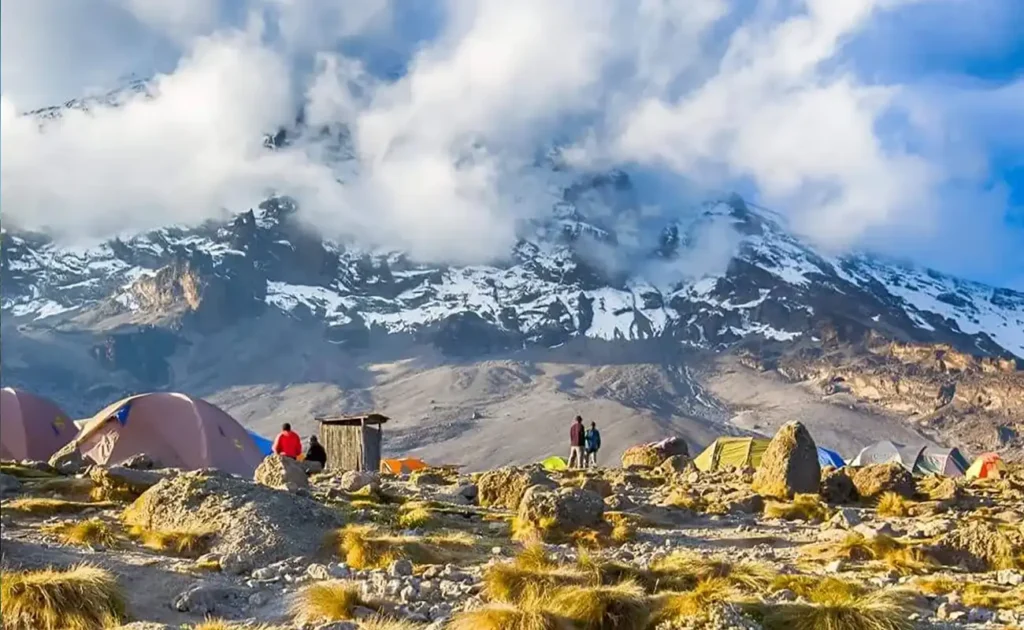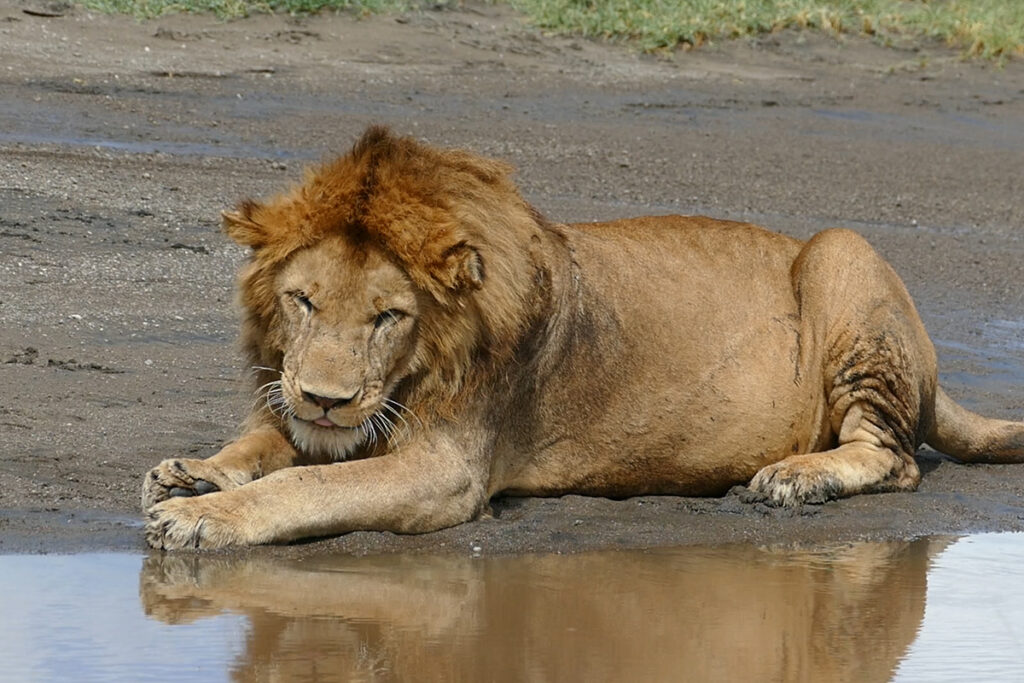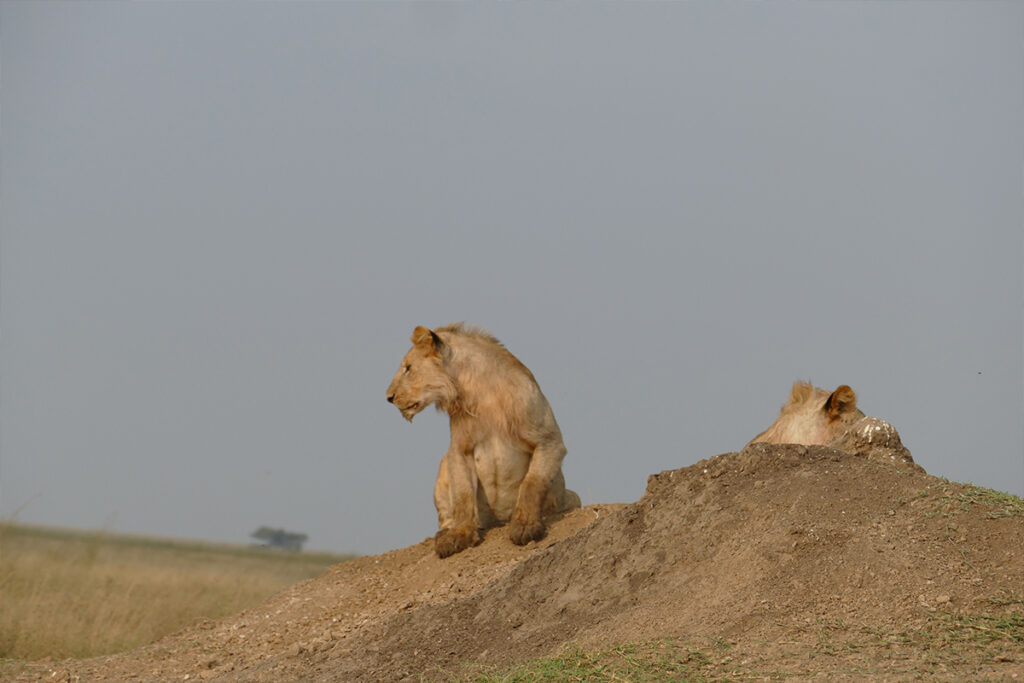In the heart of Tanzania lies an oft-overlooked ecological marvel: Tarangire National Park. Known for boasting one of the largest concentrations of elephants per square kilometer, it’s a sanctuary where these majestic creatures roam freely under the sprawling canopies of ancient baobabs. Imagine a symphony of trumpeting echoing through the terrain, resonating with nature’s untouched harmony—a true spectacle for the seasoned wildlife expert.
The park, established in 1970, offers more than just a visual delight; it is a critical refuge for migratory species during the dry season. Covering approximately 2,850 square kilometers, Tarangire beckons with its scenic beauty and biodiversity. Over 550 bird species flit through the region, alongside itinerant elephants and the enchanting baobabs, crafting a unique ecosystem that persists as one of Africa’s undisturbed treasures. These elements together create an essential stopover on any detailed exploration of Tanzania’s ecological offerings.

Tarangire National Park: A Haven for Elephant Enthusiasts
Tarangire National Park truly stands out for its impressive elephant population. It’s home to the highest elephant density in Tanzania, offering visitors an unparalleled opportunity to observe these giants in their natural environment. During the dry season, families of elephants congregate around the Tarangire River, which becomes their primary water source. It’s a breathtaking sight to witness these majestic creatures playing, bathing, and foraging. Their social behavior and interactions add another fascinating element to the experience.
Visiting Tarangire is not just about seeing elephants; it’s about understanding their role in the ecosystem. Elephants are keystone species, meaning their presence significantly influences the environment. They help maintain open landscapes by uprooting small trees, which benefits other species. This dynamic creates a balanced and diverse habitat for many animals and plants. Witnessing this in action offers deep insights into ecological relationships.
The park’s landscape features expansive savannas dotted with the iconic African baobab trees. These ancient trees, some over a thousand years old, provide shade and food for the elephants. Their enormous, swollen trunks store water, making them crucial during dry spells. The visual contrast of large elephant herds against the backdrop of baobabs is striking. This dynamic scenery adds to the park’s unique charm.
To enhance your visit, consider a guided safari. Expert guides share valuable knowledge about elephant behavior and the park’s history. They can take you to the best spots for sightings, maximizing your experience. Many tours also offer night safaris, allowing you to observe nocturnal activities. These diverse experiences make Tarangire a must-visit for any wildlife enthusiast.
Exploring the Rich Elephant Population and Their Natural Habitat
In Tarangire National Park, the elephant population thrives in a beautifully diverse and expansive habitat. The park’s environment includes grasslands, woodlands, and swamps, providing an array of ecosystems. Elephants utilize these different areas, migrating seasonally to find food and water. This movement helps to enrich the soil, promoting vegetation growth. Such dynamics enhance biodiversity across the park.
One of the most remarkable aspects of the elephants’ natural habitat is their social structure. Elephants live in matriarchal families led by the oldest female, who guides the group based on her knowledge and experience. Observing these familial units reveals complex behaviors and communication methods. These interactions highlight the intelligence and emotional depth of elephants. Understanding these dynamics enriches the wildlife viewing experience.
Tarangire’s elephants face challenges, such as the dry season, which significantly impacts their survival. During these times, water sources become scarce, and elephants often converge around the few remaining wetlands. Watching them dig for water using their trunks is both fascinating and a testimony to their adaptability. Their resourcefulness in coping with harsh conditions ensures their continued survival.
For visitors, Tarangire offers ample opportunities to witness these magnificent creatures up close. Morning and late afternoon safaris are ideal for sightings, as elephants are most active during these cooler times. Joining a guided tour increases the chances of observing unique behaviors, from playful calves to the impressive presence of mature bulls. Experiencing these sights fosters a deep appreciation for elephant conservation efforts.
The Unique Baobabs of Tarangire
Tarangire National Park is famed for its spectacular baobab trees. These ancient giants, often called “upside-down trees,” can live for thousands of years. Their enormous trunks store water, making them vital during dry seasons. This unique feature supports not only the trees but also the wildlife that relies on them. Baobabs are truly a lifeline in this dry environment.
The baobab’s flowers and seeds are essential food sources for many animals in Tarangire. Baboons and elephants, in particular, favor the nutritious seeds. The flowers bloom at night, attracting pollinators such as fruit bats. This nighttime activity contributes to the park’s vibrant ecosystem. These interactions showcase the tree’s significance in sustaining local wildlife.
Visitors to the park are often struck by the dramatic appearance of baobabs. Their gnarled branches and massive trunks create a surreal and unforgettable landscape. Many baobabs bear scars from elephants stripping their bark for moisture. These marks are reminders of the ongoing relationship between baobabs and the park’s fauna. Capturing these majestic trees in photographs is a highlight for many tourists.
Learning about baobabs offers insight into their cultural importance as well. Locals have used parts of the tree for centuries to make rope, medicine, and even shelters. This deep connection with humans adds another layer to their story. Understanding the role of baobabs in both nature and culture enriches the visitor experience. It underscores their importance beyond just their impressive size.
Wildlife Diversity Beyond Elephants
Tarangire National Park offers a rich tapestry of wildlife beyond its famous elephant herds. It’s a sanctuary to numerous animal species, enhancing the park’s ecological importance. Visitors can spot lions lounging in the shade, waiting for the coolness of dusk to begin their hunt. Zebras and wildebeests graze across the open plains, creating iconic wildlife scenes. These animals contribute to the park’s bustling ecosystem.
The park is also famous for its impressive birdlife, boasting over 550 bird species. Birdwatchers can delight in the vibrant colors of lovebirds and the majestic flight of Martial eagles. The swamps and wetlands attract a variety of waders and waterfowl. Bird species such as the African fish eagle and the Kori bustard are frequently sighted, thrilling bird enthusiasts. Such diversity makes Tarangire a prime location for ornithologists.
Alongside these animals, predators like cheetahs and leopards roam the park. These stealthy hunters navigate the terrain with agility and precision. Watching a cheetah sprint after prey is an unforgettable experience. The thrill of witnessing a predator in action contributes to the park’s allure. Visitors often list predator sightings as a tour highlight.
In addition to mammals and birds, the park hosts interesting reptiles and insects. Colorful chameleons blend into their surroundings, providing a game of hide and seek. Termite mounds scattered across the landscape are bustling with activity, building nutrient-rich soil. Reptiles such as the Nile monitor and the agama lizard also thrive here. Observing these smaller creatures adds depth to wildlife exploration.
The interplay between various species ensures the health and balance of the park’s ecosystems. This diversity supports a chain of life that fascinates ecologists and tourists alike. It’s a vibrant reminder of nature’s complexity and adaptability. Each visit to Tarangire offers new surprises and insights into these interconnected webs of life. Reveling in such biodiversity leaves visitors with a profound appreciation for nature.
Best Times to Visit Tarangire National Park
The best time to visit Tarangire National Park largely depends on what you want to see. During the dry season, from June to October, wildlife is easier to spot. Animals congregate near water sources, creating excellent viewing opportunities. This period is ideal for watching elephants gather around the Tarangire River. Visitors can witness the spectacle of diverse animals sharing watering holes.
The wet season, spanning from November to May, paints the park in vibrant greens. Although wildlife may be more dispersed, the scenery is breathtaking. Birdwatching enthusiasts will be in for a treat as migratory birds flock to the park. This season also ensures fewer crowds, offering a more serene experience. It’s perfect for those seeking solitude and natural beauty.
The park experiences short rains in November and December, followed by longer rains from March to May. Rainfall transforms the landscape into a lush, verdant paradise. These months might have challenging road conditions, but they present unique photo opportunities. Travelers should prepare for possible rain showers during this time. However, the reward is witnessing a revitalized ecosystem.
Weather during different seasons can affect your packing list. The dry season requires lighter clothing, hats, and sunscreen for the sunny days. Conversely, the wet season necessitates waterproof gear and layered clothing. Planning according to the weather ensures a comfortable visit. It’s crucial to consider these factors while arranging your Tarangire adventure.
Planning Your Tarangire Tour: Essential Tips
When planning a visit to Tarangire National Park, it’s crucial to select the best time of year. The park has something to offer in every season, but your goals will dictate the ideal time to visit. For instance, wildlife viewing is at its peak during the dry season. Conversely, the wet season offers lush landscapes and vibrant birdlife. Knowing what you want to experience helps tailor your trip.
Choosing the right accommodation is another vital part of your trip. Options range from luxury lodges to budget-friendly campsites. Considerations such as proximity to the park’s entrance and available amenities play key roles. Many lodges offer guided safari packages to enhance your experience. Comparing your options ensures a comfortable stay that fits your needs.
Packing appropriately for your Tarangire adventure enhances your overall enjoyment. Essentials include sunblock, hats, and lightweight clothing for sunny days. During the wet season, don’t forget waterproof gear. Binoculars and cameras are crucial for capturing wildlife moments. Preparing your gear in advance sets the stage for a successful safari.
Booking a guided tour increases your chances of seeing diverse wildlife. Expert guides know the park’s terrain and animal habits. They provide informative details about Tarangire’s ecosystems. Many tours include early morning or late afternoon game drives, ideal times for animal activity. Opting for competent guides enriches your experience significantly.
Considering transportation options is pivotal for getting around the park effectively. Many visitors choose to rent a 4×4 vehicle, offering the flexibility to explore at their own pace. Alternatively, choose organized tours that handle transportation and logistics. Be sure to verify the park’s entry requirements and fees beforehand. Adequate preparation ensures a smooth and enjoyable visit to this wildlife gem.
Key Takeaways
- Tarangire National Park features large herds of elephants.
- The park is famous for its iconic baobab trees.
- Expert-led tours reveal the park’s diverse ecosystem.
- Seasonal rivers are essential for animal gatherings.
- The park offers exceptional birdwatching opportunities.



